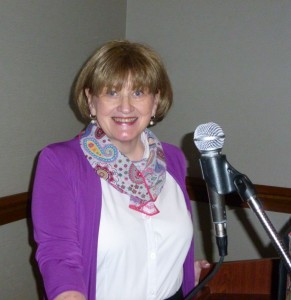I met Clarence first through the work Kerry and I did through the Boy Scouts of America. He was a merit badge counselor, and had served in a number of positions throughout the years, just as we had.
I had an awkward encounter with him at the YMCA when our children were little. We were all swimming, and I was standing in water up to my shoulders with my legs far apart. I suddenly felt something "whoosh" through my legs.
It was Clarence! He swam through my legs and popped up in front of me, exclaiming a loud, "Hi, Peggy!". I nearly died!
Clarence was a poor man. He owned a bicycle, and thought nothing of traveling for miles and miles and miles on that bike. It was only means of getting around. At one point, there had been a complaint about it being unsightly in downtown Mansfield, so the police confiscated it.
At his memorial service, it stood proudly with bouquets of flowers decorating it.
A gentleman sitting at the piano warmed my musical heart with beautiful renditions of well-beloved hymns and songs on the piano at the Episcopal Church.
As a musician at my own church, I always save funeral programs.
And, because I have amassed so many of these programs and bulletins, I have gone back through them all and made a note of how we knew the person, and our relationship to them.
Some day, when we are dead and gone, my family will probably be going through all of those programs, perhaps wondering how we're related to them; when actually there was no relationship at all...other than friendship.
Clarence's funeral was held in the beautiful Episcopalian Church in downtown Mansfield. I had never been in there before, and was astounded at its beauty.
But, there was something that astounded me even more.
This small man, about the same height as me at 5'3", only riding a bicycle the majority of his life, sometimes homeless, had affected the lives of hundreds of people.
Leaders from several different churches and agencies downtown wondered how they were going to find enough people to replace all that Clarence did.
- He was always there to unload food trucks that delivered food to those in need. He would often stand out in the rain and cold to flag down the truck, who might be looking for the right place.
- He helped to keep order as people lined the hallways waiting for the food.
- He always made sure he was the last one to eat.
- If someone came in late, and Clarence was standing there with the last plate, he would give it to that person.
- He gathered up the trash after every public event. It was something few people volunteered to do, and Clarence was there first, and stayed late.
- He collected hundreds of pounds of cans to turn in for cash, which would then be donated to the Ronald McDonald house in Columbus.
Clarence made an impact in so many people's lives. Yet, he "appeared" to be one small, scruffy man who always took a back seat.
Because of his service to so many, I have no doubt he was welcomed into heaven and embraced with open arms into the One who loved him more than anyone.
God bless Clarence. There aren't many like him...


























































